Knock out roses are renowned for their vibrant colors, low maintenance requirements, and continuous blooming throughout the growing season. Whether you’re a novice gardener or a seasoned rose enthusiast, understanding how to care for and grow knock out roses is essential to ensure their health and vitality. In this comprehensive guide, we will explore everything you need to know about caring for and growing all types of knock out roses.
Care for Knock out Roses
Proper care is vital for the health and vigor of knock out roses. Here’s how to care for these beautiful flowers:
Sunlight:
- Full Sun: Plant knock out roses in an area that receives at least six hours of direct sunlight daily to promote robust growth and abundant flowering.
Soil:
- Well-Draining Soil: Ensure the soil is well-draining and rich in organic matter to prevent waterlogging and root rot.
Watering:
- Deep Watering: Water knock out roses deeply at the base of the plant to encourage deep root growth. Avoid overhead watering to prevent fungal diseases.
Fertilization:
- Regular Feeding: Fertilize knock out roses regularly during the growing season with a balanced fertilizer formulated for roses to promote healthy growth and blooming.
Types of Knock out Roses
Knock out roses are available in various types, each offering unique colors, growth habits, and disease resistance. Here are some popular types of knock out roses:
Original Knock out Rose:
- The original knockout rose features cherry-red blooms and excellent disease resistance, making it a favorite among gardeners.
Double Knock out Rose:
- The double knockout rose produces double-layered blooms in vibrant colors, adding a touch of elegance to any garden landscape.
Pink Knock out Rose:
- Pink knock out roses boast soft pink blooms that add a delicate and romantic charm to garden beds and borders.
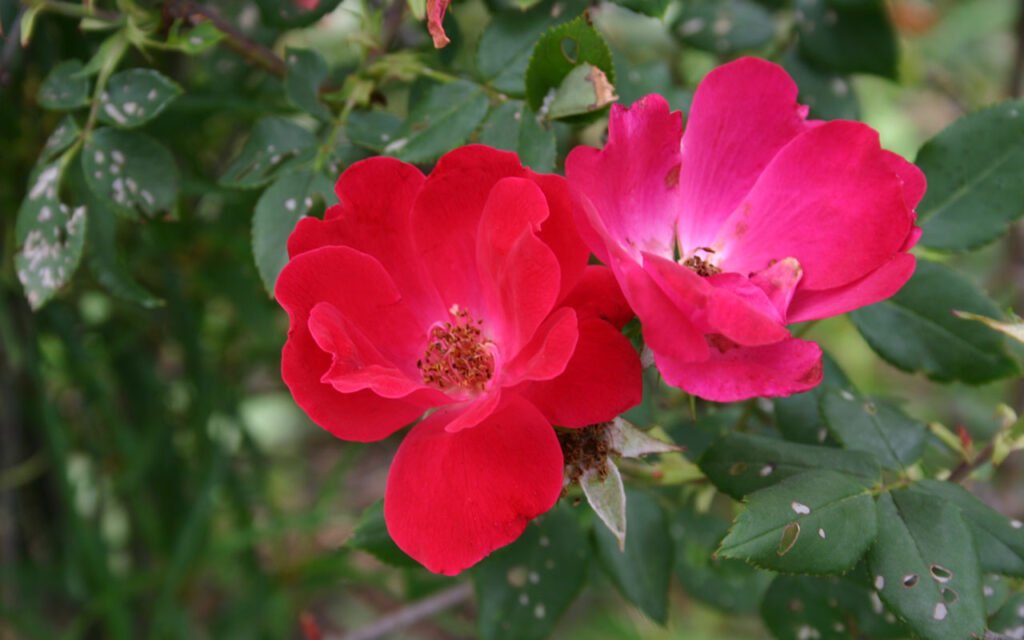
Pruning Knock out Roses
Pruning is essential for maintaining the shape, size, and health of knock out roses. Here’s how to prune knock out roses effectively:
Deadheading:
- Remove spent blooms regularly to encourage continuous flowering throughout the growing season.
Shaping:
- Trim back overgrown or wayward branches to maintain the desired shape and size of the plant.
Disease Control:
- Prune out any diseased or damaged wood to prevent the spread of infections and promote overall plant health.
Propagating Knock out Roses
Propagating knock out roses allows you to expand your rose garden and share the beauty of these exquisite flowers with others. Here are some methods for propagating knock out roses:
Stem Cuttings:
- Take stem cuttings from healthy, disease-free plants during the active growing season.
- Prepare the cuttings by trimming them to about 6 inches in length and removing any leaves from the lower half of the stem.
- Plant the cuttings in a well-draining potting mix and keep them consistently moist until roots develop.
Overwintering Knock out Roses
Preparing knock out roses for winter ensures their survival and vitality when temperatures drop. Here’s how to overwinter knockout roses:
Mulching:
- Apply a layer of organic mulch around the base of the plants to insulate the soil and protect the roots from freezing temperatures.
Pruning:
- Trim back any long or overgrown branches to reduce wind damage and prevent snow from weighing down the branches.
Common Pests and Diseases
Despite their resilience, knockout roses are susceptible to certain pests and diseases. Here are some common pests and diseases to watch out for:
Aphids:
- Look for clusters of small, soft-bodied insects on the undersides of leaves and along stems.
- Spray affected plants with a strong stream of water to dislodge aphids, or use insecticidal soap for severe infestations.
Black Spot:
- Symptoms include black spots on the leaves, yellowing foliage, and premature leaf drop.
- Remove and destroy infected leaves, and apply fungicidal sprays to prevent the spread of the disease.
Blooming of Knock out Roses
Knockout roses are prized for their prolific blooming habits, providing a stunning display of color throughout the growing season. Here’s how to encourage blooming:
Deadheading:
- Remove spent blooms regularly to stimulate the production of new flowers and prolong the blooming period.
Fertilization:
- Apply a balanced fertilizer formulated for roses regularly to provide essential nutrients for blooming.
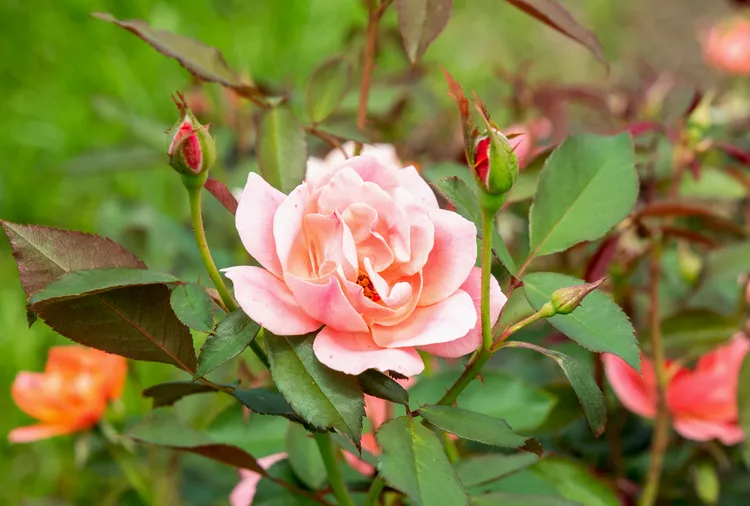
Common Problems with Knock out Roses
Despite their easy-care nature, knockout roses may encounter some common problems. Here are a few issues you may encounter:
Yellowing Leaves:
- Caused by nutrient deficiencies, overwatering, or pest infestations.
- Adjust watering practices, fertilize as needed, and treat for pests promptly to prevent further damage.
Powdery Mildew:
- Symptoms include a white powdery coating on leaves, stems, and buds.
- Improve air circulation around plants, avoid overhead watering, and apply fungicidal sprays as needed.
Frequently Asked Questions (FAQs)
How often should I water knockout roses?
Water knockout roses deeply at least once a week, ensuring the soil is moist but not waterlogged.
When is the best time to prune knockout roses?
Prune knockout roses in late winter or early spring before new growth begins to emerge.
Can knockout roses tolerate partial shade?
While knockout roses prefer full sunlight, they can tolerate partial shade, but may produce fewer blooms in shaded areas.
Conclusion
Knockout roses are versatile, low-maintenance plants that add beauty and color to any garden landscape. By following the care guidelines outlined in this comprehensive guide, you can enjoy healthy, vibrant knockout roses year after year. Remember to provide adequate sunlight, water, and nutrients, and address any issues promptly to ensure the continued success of your knockout rose garden.




